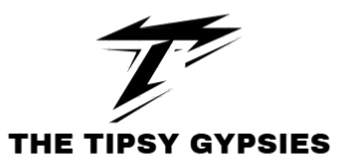Accountability is a foundation of high performance. It turns promises into results, and it builds trust at every level of an organization. However, creating that culture isn’t solely the responsibility of leaders, it’s the systems that enable it. In many organizations, accountability fails not from a lack of intent, but from a lack of visibility, clarity, and follow-up.
Modern organizations are solving this challenge by adopting the best project management tools that connect communication, execution, and oversight in one place. More intelligent digital systems don’t just track progress—they reinforce it. They make ownership visible, deadlines visible, and outcomes visible, enabling teams to align and own the process from start to finish.
Lark provides this groundwork through a connected tools suite that transforms accountability from an articulated value into an ongoing practice.
Lark Messenger: Keeping commitments visible

Accountability begins with clarity in communications. When conversations and decisions flit in a variety of tools, the responsibility is lost. Lark Messenger facilitates collaboration in a consolidated place so that conversations can turn directly into action.
For example, a marketing manager can assign next steps directly from a team chat- “Hey Alex, finalize the campaign visuals by Thursday” and attach it to a task at the same time. Pinned messages remind everyone of deadlines, while searchable history helps teams remember conversations or assignments. Team channels, help the entire team understand who has responsibility for action.
Messenger keeps communication clear and in context, enabling teams to replace ambiguity with clarity and follow through.
Unlock more meaning—related posts that connect ideas and inspire growth.
Lark Docs: Documenting decisions and responsibilities

When accountability relies on memory, some details fall through the cracks. Lark Docs transform decisions in accountability into documented commitments. It allows teams to co-author plans, define ownership, and track progress, all in one live and editable workspace.
For example, you have a document for launching a product. Marketing defines the deliverables, design confirms the assets, and engineering specifies the timelines. Every comment or edit captures agreement and accountability. You can track any changes or comments from version history, and if you create Linked Records, plans can connect directly to execution.
Docs help organizations move from verbal agreements to documented accountability. Every edit, note, or comment becomes an entry part of an ongoing record that can track transparency and performance.
Lark Tasks: Turning ownership into measurable progress

Without structure, accountability doesn’t exist. Lark Tasks provides the structure by converting responsibilities into visible, trackable actions. So, accountability does not become cloudy or become vaporous – it is built into each project, deliverable, and timeline.
Think about a customer success team engaged with client onboarding. In this onboarding process, the team will have defined roles and responsibilities for each team member (training, documentation, questions, follow-ups…) With Tasks, all team members understand accountability, and supervisors can look at dashboards to see progress. If bottlenecks develop, managers can re-assign tasks, or reprioritize without losing visibility.
Automations further strengthen accountability. Through updates and reminders reach the right people automatically, reducing the need for micromanagement. Tasks help teams stay proactive rather than reactive, ensuring accountability never fades under busy schedules.
Lark Calendar: Aligning teams through shared rhythm

Accountability depends on consistency first and foremost. By simply checking in regularly and establishing clear due dates, we won’t lose track of commitments. Lark Calendar is designed so that teams are aligned around time as a shared structure.
For example, a finance team scheduling weekly budget reviews can attach their related Docs or Sheets to each recurring invite. Calendar will know how to convert time zones along the way for global teams and participants without overlapping schedules. Basic reminders will let attendees know ahead of budget reviews, keeping team accountability fresh in between reviews.
Calendar helps teams focus and follow up by embedding routine and visibility into scheduling. That is, what gets scheduled, gets done.
Lark Approval: Accountability through transparent decisions

When approvals are done via email or informal conversations, it is difficult to understand who is responsible for what task. The Lark Approval feature eliminates this ambiguity by creating clear, recorded decision paths. Lark records each approval requested—whether it is for budgets, proposals, or policies—using a fully visible automated workflow that keeps every step transparent and traceable.
Let’s take a hiring process as an example. A manager submits a candidate recommendation through Approval. The request will be automatically routed to HR, then to leadership, and then to finance. Meanwhile, each step, where time stamps, requests, comments, and notes are created and logged, all remains visible. There is no question who approved what because all the approval documentation exists in the process.
With automated approvals and the approval documentation process, Lark holds decision-making accountable, not just task completion. Transparency is built into the process as a way to guard against confusion or oversights.
Lark Sheets: Making performance measurable

Accountability depends upon measurement. Teams cannot change things they cannot see. Lark Sheets helps provide real-time visibility into key performance indicators to allow organizations to convert metrics into continuous accountability.
For instance, a sales team can track daily outreach, conversion rates, and revenue goals in a shared sheet. Team members can update this shared sheet, and the updates appear instantly. Team managers can then pull real-time achievements, or problems for resolution. Charts and filters help make progress visible, while links direct readers to related tasks or approvals, as appropriate.
Sheets helps bring performance into the open. It allows executives down to individual contributors visibility and creates ownership at every turn.
Lark Base: Creating systemic accountability across the organization

Being accountable across an organization at scale requires visibility in every department. Lark Base provides that visibility by consolidating data, workflows, and performance management in one connected system. It serves the structural foundation of accountability and adaptability.
For example, a construction company can use Base to track project milestones, safety compliance, and resource allocation across a number of sites. Every record is connected to related activities, approvals, and documents, allowing leadership to maintain a complete, real-time view of performance. Dashboards show who is accountable for every outcome, ensuring that no project is off track without someone knowing.
By combining structure with flexibility, Base provides the reliability expected from project management software. It turns accountability into an organizational standard—consistent, visible, and actionable.
Conclusion
Accountability isn’t accomplished with policies—it’s created with systems that facilitate the easy visibility and the hard-to-avoid sense of ownership. Lark’s connected platform accelerates this accountability across all aspects of work: Messenger helps ensure transparency, Docs document the commitments, Tasks move ownership into traction with relevant workflows, Calendar ensures we have a shared pattern of consistency, Approval allows us to track decisions, Sheets track and report our progress, and Base utilizes the structure of project management software.
With a more intelligent digital systems, accountability is not a goal or a mission, it’s the organic pattern for how teams work together, communicate, and achieve success.
Adventure never ends! Explore more articles that keep curiosity alive.






